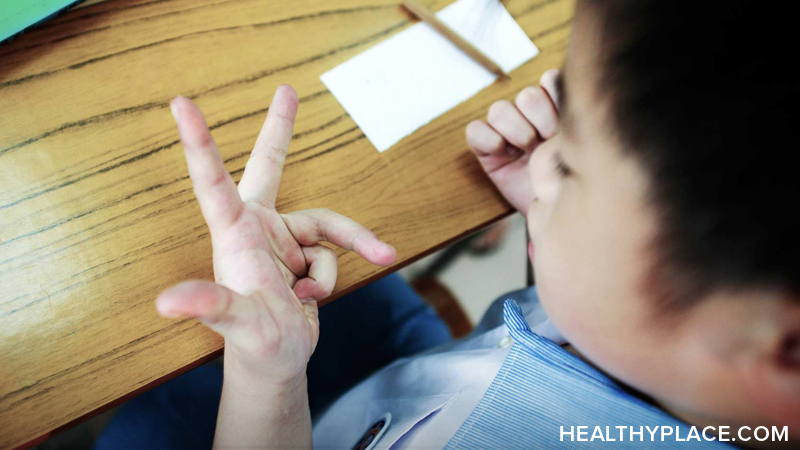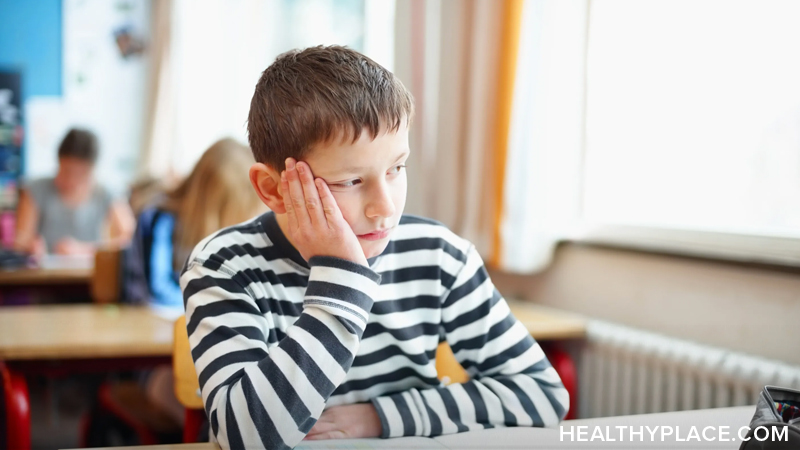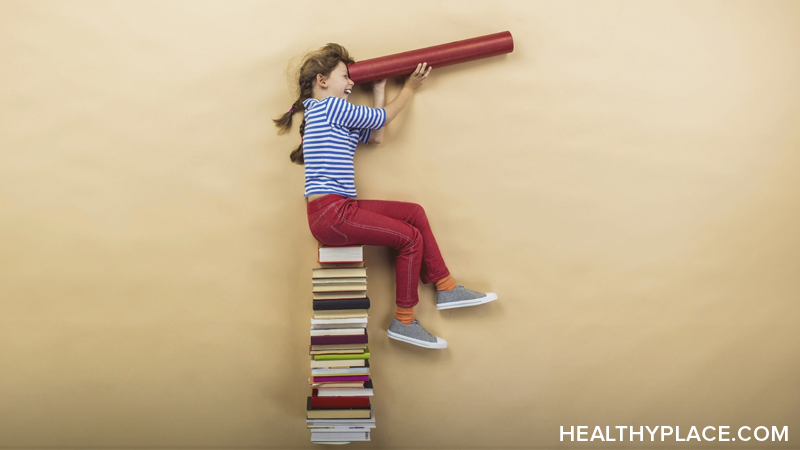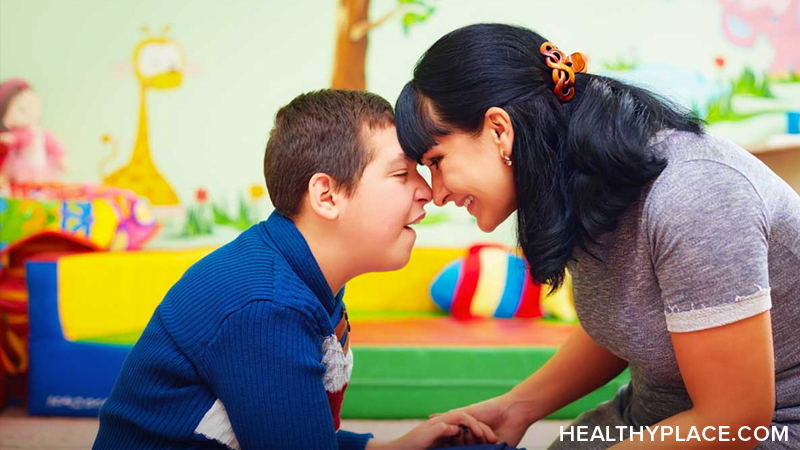 Misdiagnosing ADHD and bipolar disorder in children is not unusual. Find out why along with detailed information on ADHD and bipolar disorder in young children.
Misdiagnosing ADHD and bipolar disorder in children is not unusual. Find out why along with detailed information on ADHD and bipolar disorder in young children.
In children, attention deficit hyperactivity disorder (ADHD) and bipolar disorder are often misdiagnosed due to an overlapping of symptoms like inattention and hyperactivity. If left untreated, these children are at risk for developing antisocial behavior, social alienation, academic failure, along with problems with the law and substance abuse. Correct diagnosis and early intervention are the keys to improving the outcome for these children.
ADHD
Attention Deficit Hyperactivity Disorder (ADHD) is the most commonly diagnosed childhood psychiatric illness, affecting about 345% of American children under the age of 13. Children with ADHD do not appear to have a deficit of attention so much as a lack of consistent direction and control. Two symptoms commonly identified with ADHD, impulsivity and hyperactivity, are not required for the diagnosis.
There are strong gender differences in ADHD - nearly 90% of children diagnosed with ADHD are boys. Differences in how boys and girls exhibit symptoms may play a role in the prevalence of ADHD in boys. Boys with ADHD are more likely to be hyperactive than girls and, therefore attract a great deal of attention. A girl with ADHD who daydreams at the back of a classroom may be unhappy and failing in school, but she does not attract the attention given to a boy who is constantly talking out of turn, jumping up from his desk, and pestering other children.
Physical and psychiatric illnesses can cause symptoms that resemble ADHD. These include:
- atypical depression
- anxiety disorder
- impaired speech or hearing
- mild retardation
- traumatic stress reaction
A third to a half of children with ADHD have major depression or anxiety disorders. They may also have learning disabilities with deficits in visual and auditory discrimination, reading, writing, or language development.
Often, ADHD is associated with a conduct disorder (lying, cheating, bullying, setting fires, deliberate cruelty, etc.). It has generally been believed that the stimulant drugs used to treat attention deficits have no direct effect on this misbehavior. A recent study, however, found that the stimulant methylphenidate (Ritalin) improved unpleasant behavior of all kinds - even cheating and stealing - regardless of the severity of the child's attention deficit.
Course of Illness
ADHD in adolescents varies more than in children and is marked by poor follow-through on tasks and failure to complete independent academic work. The ADHD adolescent is more likely to be restless than hyperactive, and engage in risky behaviors. They are at increased risk for school failure, poor social relationships, auto accidents, delinquency, substance abuse, and poor vocational outcome.
In about 10-60% of the cases, ADHD can persist into adulthood. A diagnosis of ADHD in adults can only be made with a clear history of childhood attention-deficit and distractibility, impulsivity or motor restlessness. ADHD does not have a new onset at adulthood, therefore an adult must have a childhood history of ADHD symptoms.
Objective Test for ADHD
Research studies are being done to more easily identify children with ADHD. Dr. Martin Teicher, of Harvard University, has developed an infrared motion analysis system to record the movement patterns of boys with ADHD and normal controls as they performed a repetitious attention task seated before a computer. The system tracked the position of four markers placed on each of the boys' head, back, shoulder, and elbow, at 50 times per second with a high degree of resolution.
The test results showed that boys with ADHD were two to three times more active than normal boys their own age and had larger whole-body movements. "What this test measures is a youngster's capacity to sit still," said Dr. Teicher. "There are a lot of children who know they should sit still and have the capacity to sit still, but just don't. This test is able to detect the children who know they should sit still and try to sit still, but physically are unable."
A child's capacity to sit still, said Dr. Teicher, often distinguishes a child with ADHD from a child who may have a simple behavioral problem, neurological problem or learning disorder. "It surprises me how often clinicians say ADHD, when the problem is really a learning disorder; particularly when there is no evidence of ADHD and no evidence that medications help learning disorders," he noted. This test, known as the "McLean test," uses recent advances in video technology to accurately measure both attention and body movements, unlike previous tests which have focused entirely on attention as an indicator for ADHD.
Differences in the Brains of Children with ADHD
Most experts agree that ADHD is a brain disorder with a biological basis. A genetic influence is suggested by studies comparing identical with fraternal twins and by the high rates of ADHD (as well as antisocial behavior and alcoholism) found in the families of children with the disorder.
Using Magnetic Resonance Imaging (MRI), scientists have found that the brains of children with ADHD are structurally different. In a study done by Drs. Xavier Castellanos and Judy Rapoport (a NARSAD Scientific Council member) from the National Institute of Mental Health, MRI scans were used to show that the boys with ADHD had more symmetrical brains than their normal controls.
Three structures in the affected circuit on the right side of the brain prefrontal cortex, caudate nucleus and globus pallidu - were smaller than normal in the boys with ADHD. The prefrontal cortex, located in the frontal lobe just behind the forehead, is believed to serve as the brain's command center. The caudate nucleus and globus pallidus, located near the middle of the brain, translate the commands into action. "If the prefrontal cortex the steering wheel, the caudate and globus are the accelerator and brakes," explains Dr. Castellanos. "And it's this braking or inhibitory function that is likely impaired in ADHD." ADHD is thought to be rooted in an inability to inhibit thoughts. Finding smaller right hemisphere brain structures responsible for such "executive" functions strengthens support for this hypothesis.
The NIMH researchers also found that the entire right cerebral hemispheres in boys with ADHD were, on average, 5.2% smaller than those of controls. The right side of the brain is normally larger than the left. Hence, the ADHD children, as a group, had abnormally symmetrical brains.
According to Dr. Rapoport, "These subtle differences, discernible when comparing group data, hold promise as telltale markers for future family, genetic and treatment studies of ADHD, however, because of normal genetic variation in brain structure, MRI scans cannot be used to definitively diagnose the disorder in any given individual."
The newly confirmed markers may provide clues about the causes of ADHD. The investigators found a significant correlation between decreased normal asymmetry of the caudate nucleus and histories of prenatal, perinatal and birth complications, leading them to speculate that events in the womb may affect the normal development of brain asymmetry and may underlie ADHD. Since there is evidence for a genetic component in at least some cases of ADHD, factors such as a predisposition to prenatal viral infections could be involved.
Smoking During Pregnancy and ADHD
Studies done by Drs. Sharon Milberger and Joseph Biederman of Harvard University suggest that mamaternalmoking during pregnancy is a risk factor for ADHD. The mechanism for the positive association between maternal smoking and ADHD remains unknown but go along the "nicotinic receptor hypothesis of ADHD." This theory states that exposure to nicotine can affect a number of nicotinic receptors, which in turn affect the dopaminergic system. It is speculated that there is a dysregulation of dodopaminen ADHD. Partial support for this hypothesis comes from basic science which has shown that exposure to nicotine leads to an animal model of hyperactivity in rats. More studies need to be done to conclusively pinpoint whether there is a connection between smoking and ADHD.
Treatment of ADHD
The effects of stimulants in treating ADHD are quite paradoxical because they make children calmer rather than more active with improved concentration and reduced restlessness. Stimulants have long been the mainstay of medication therapy for ADHD because they are safer and more effective than clonidine (Catapres) or the antidepressants, particularly tricyclics.
There is little danger of drug abuse or addiction with stimulants because children do not feel euphoria or develop tolerance or craving. They become dependent on stimulant drugs like a person with diabetes is dependent on insulin or a nearsighted person on eyeglasses. The main side effects - appetite loss, stomach aches, nervousness, and insomnia - usually subside within a week or can be eliminated by lowering the dose.
Stimulants can cause side effects that are of special concern for treating children. One of these is the reduction of growth speed (found to be temporary and mild) with children "catching up" to heights predictive from their parents' heights. Cardiovascular effects such as palpitations, tachycardia and increased blood pressure are seen with dextroamphetamine and methylphenidate. Liver functioning can also be affected with the use of stimulants and, therefore a liver function test is required twice a year. The elevation of liver enzymes has been found in methylphenidate and pemoline to be temporary and returns to normal after these two stimulants are discontinued.
Several other kinds of drugs are also used in treating ADHD when the patient does not improve on stimulants or cannot tolerate their side effects. Beta-blockers such as propranolol (Inderal) or nadolol (Corgard) can be prescribed along with stimulants to reduce jitteriness. Another alternative to the stimulants is the antidepressant bupropion (Wellbutrin). Recent studies have found it to be as effective as methylphenidate in treating children with ADHD. Bupropion appears to be a useful alternative for children who either do not respond to methylphenidate or who cannot take it due to allergy or side effects.
While ADHD core symptoms of inattention, hyperactivity and impulsivity can be reduced with medication, the social skills, work habits and motivation that have deteriorated along the course of the disorder require a multimodal treatment approach. Children with ADHD need structure and routine.
Stimulants Frequently Used to Treat ADHD:
Dextroamphetamine (Dexedrine)
- Rapid absorption and onset (within 30 minutes but can last up to 5 hours)
Methylphenidate (Ritalin)
- Rapid absorption and onset (within 30 minutes but lasts 24 hours)
Especially when young, ADHD children often respond well to strict application of clear and consistent rules. In addition to medication, treatment should include specific psychotherapy, vocational assessments and counseling, as well as cognitive-behavior therapy and behavior modification. Psychotherapy can support the transition away from ADHD behavioral patterns.
Vocational assessment and counseling can improve time management and organizational skills. Family counseling is needed to improve interpersonal communication and problem-solving skills, and cognitive-behavior therapy to instill means to manage stress.
Children with ADHD...
- Are easily distracted and often seem to be daydreaming
- Usually do not finish what they start and repeatedly make what appear to be careless mistakes
- Switch haphazardly from one activity to another
- Arriving on time, obeying instructions, and following rules are difficult for them
- Seem irritable and impatient, unable to tolerate delay or frustration
- Act before thinking and do not wait their turn
- In conversation, they interrupt, talk too much, too loud, and too fast, and blurt out whatever comes to mind
- Seem to be constantly pestering parents, teachers, and other children
- Cannot keep their hands to themselves, and often appear to be reckless, clumsy, and accident-prone
- Appear restless; if must remain still, they fidget and squirm, tap their feet, and shake their legs.
Bipolar Disorder
Another difficult to diagnose illness in children is bipolar disorder. Several decades ago, the existence of bipolar illness in preadolescent children was considered a rarity or an anomaly, now it is increasingly recognized. Epidemiological data reveals that childhood and adolescent mania occurs in 6% of the population. The peak onset of illness is between the ages of 15-20 with 50% of individuals having abused drugs and alcohol. In fact, early-onset bipolar disorder is a very high-risk factor for subsequent drug abuse rather than vice-versa.
As such, diagnosed bipolar children should be entered into appropriate substance abuse prevention programs. Substance abuse can have an additional impact on gene expression and brain function and can only further complicate an already difficult to treat illness.
Diagnosing Bipolar Disorder
Children with mania do not have exactly the same symptoms as adults and are seldom elated or euphoric; more often they are irritable and subject to outbursts of destructive rage. Furthermore, their symptoms are often chronic and continuous rather than acute and episodic, as in adults. Also, irritability and aggressiveness complicate the diagnosis, since they can also be symptoms of depression or conduct disorder.
According to Dr. Janet Wozniak (a 1993 NARSAD Young Investigator) of Harvard University, the type of irritability often observed in manic children is very severe, persistent, and often violent. The outbursts often include threatening or attacking behavior toward others, including family members, other children, adults, and teachers. Between outbursts, these children are described as persistently irritable or angry in mood. Although the aggressiveness may suggest a conduct disorder, it is usually less organized and purposeful than the aggression of predatory juvenile delinquents.
Treating Childhood Bipolar Disorder
In general, the treatment of mania in children and adolescents follows the same principles that apply to adults. Mood stabilizers such as lithium, valproate (Depakene), and carbamazepine (Tegretol) are the first line of treatment. Some of the subtle differences in treating children include adjusting the lithium dosage since the therapeutic blood levels are somewhat higher in children than in adults, presumably due to the greater capacity of the young kidney to clear lithium. Also, baseline liver function tests are necessary before starting treatment with valproic acid because it can cause hepatotoxicity (i.e. toxic damage to the liver) in children under 10 (greatest risk is for patients less than 3 years old).
The potentially life-threatening depressive states of bipolar children can be managed with antidepressants. The selective serotonin reuptake inhibitor fluoxetine (Prozac) has recently been found effective in a controlled study for treating children. Tricyclic antidepressants (TCAS) have not been shown to be particularly effective and one TCA, desipramine (Norpramin), has been associated with rare cases of sudden death in young children due to a disturbance of heart rhythms. Since these drugs can exacerbate mania, they should always be introduced after mood stabilizers, and an initial low dose should be raised gradually to therapeutic levels.
There is increasing evidence that lithium-responsiveness may run within families. According to Dr. Stan Kutcher of Dalhousie University in Halifax, Canada, the children of parents who were lithium non-responders were much more likely to have psychiatric diagnoses and more chronic problems with their illness than those whose parents were lithium responders.
ADHD in Combination with Bipolar Disorder
Nearly 1 in 4 children with ADHD have or will develop bipolar disorder. Both bipolar disorder with ADHD and childhood-onset bipolar disorder begin early in life and occur mainly in families with a high genetic propensity for both disorders. Adult bipolar disorder is equally common in both sexes, but most children with bipolar disorder, like most children with ADHD, are boys, and so are most of their bipolar relatives.
Some children with bipolar disorder or a combination of ADHD and bipolar disorder may be wrongly diagnosed as having only ADHD. Hypomania can be misdiagnosed as hyperactivity because it is manifested as distractibility and shortened attention span.
Similarities between ADHD and Bipolar Disorder in children:
Both illnesses...
- Begin early in life
- Are much more common in boys
- Occur mainly in families with a high genetic propensity for both disorders
- Have overlapping symptoms such as inattention, hyperactivity, irritability
Genetically Linked
ADHD and bipolar disorder appear to be genetically linked. Children of bipolar patients have a higher than average rate of ADHD. The relatives of children with ADHD have twice the average rate of bipolar disorder, and when they have a high rate of bipolar disorder (especially the childhood-onset type), the child is at high risk for developing bipolar disorder. ADHD is also unusually common in adult patients with bipolar disorder.
Research studies have found some clues for identifying which children with ADHD are at risk for developing bipolar disorder later on which include:
- worse ADHD than other children
- more behavioral problems
- family members with bipolar and other mood disorders
Children with bipolar disorder and ADHD have more additional problems than those with ADHD alone. They are more likely to develop other psychiatric disorders such as depression or conduct disorders, more likely to require psychiatric hospitalization, and more likely to have social problems. Their ADHD is also more likely to be severe than in children without accompanying bipolar disorder.
Treatment of Bipolar Disorder with ADHD
Unstable moods, which are generally the most serious problems, should be treated first. Not much can be done about ADHD while the child is subject to extreme mood swings. Useful mood stabilizers include lithium, valproate (Depakene), and carbamazepine sometimes several drugs will be needed in combination. After mood stabilizers take effect, the child can be treated for ADHD at the same time with stimulants, clonidine, or antidepressants.
References:
Bender Kenneth, J. ADHD Treatment Mainstays Extend from Childhood to Adulthood Supplement to Psychiatric Times. February 1996.
Milberger, Sharon, Biederman, Joseph. Is Maternal Smoking During Pregnancy a Risk Factor for Attention Deficit Hyperactivity Disorder in Children? American Journal of Psychiatry. 153:9, September 1996.
Schatzberg, Alan E, Nemeroff, Charles B. Textbook of Psychopharmacology. American Psychiatric Press, Washington, D. C, 1995.
Goodwin, Frederick K., Jamison Kay Redfield. Manic-Depressive-Illness. Oxford University Press. New York, 1990.
Wozniak, Janet, Biederman, Joseph. A Pharmacological Approach to the Quagmire of Comorbidity in Juvenile Mania. Journal of American Academy of Child & Adolescent Psychiatry. 35:6. June 1996.
Source: NARSAD

 Misdiagnosing ADHD and bipolar disorder in children is not unusual. Find out why along with detailed information on ADHD and bipolar disorder in young children.
Misdiagnosing ADHD and bipolar disorder in children is not unusual. Find out why along with detailed information on ADHD and bipolar disorder in young children.






